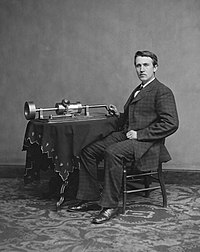
Photo from wikipedia
Objective Innovation ability is an important part of children's core literacy and the core goal of science curriculum. As one of the important contents of scientific literacy, innovation ability is… Click to show full abstract
Objective Innovation ability is an important part of children's core literacy and the core goal of science curriculum. As one of the important contents of scientific literacy, innovation ability is the key ability of young children to make informed decisions when facing scientific problems in social and personal life. In order to adapt to the future life, it is very important for children to have the ability to innovate. This research will provide a reference for the cultivation of children's innovative ability. Method In the process of database design, certain design principles need to be followed. In this paper, the system and user experience are greatly optimized by reasonably constructing table structure, allocating storage space, and establishing indexes. In this system, the MySQL database is used to store system data, such as user registration information, subscription information, and system-provided services, and the data uploaded by users that needs to be processed is stored in Hive. Although the GFP algorithm can solve the problem of load balancing, when the largest conditional pattern base of a frequent item is projected to other nodes, a large amount of data transmission will occur, resulting in increased communication between nodes. In order to solve this problem, the FP-growth parallel algorithm based on traffic optimization gives priority to assigning each frequent item to the node that needs the least traffic when grouping it. Results/Discussion. Experiments show that the TFP algorithm not only satisfies the load balance of nodes but also ensures a small amount of communication between nodes, which is more efficient than the traditional FP-growth parallel algorithm. The survey results of the influencing factors of children's innovation ability match the theoretical hypothesis, and different influencing factors have different effects on each dimension of children's innovation ability. Through the basic fit index of the model, the evaluation of the external quality of the model and the test of the internal quality of the model, it is shown that the survey results of the influencing factors of children's innovation ability match the theoretical hypothesis. The three influencing factors of family participation and investment, teacher teaching, and peer collaboration and communication have a positive role in promoting children's innovation ability.
Journal Title: Occupational Therapy International
Year Published: 2022
Link to full text (if available)
Share on Social Media: Sign Up to like & get
recommendations!